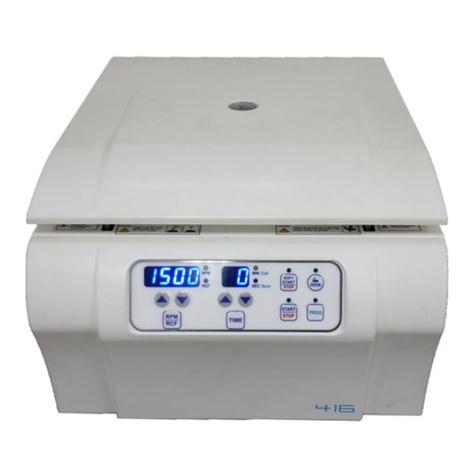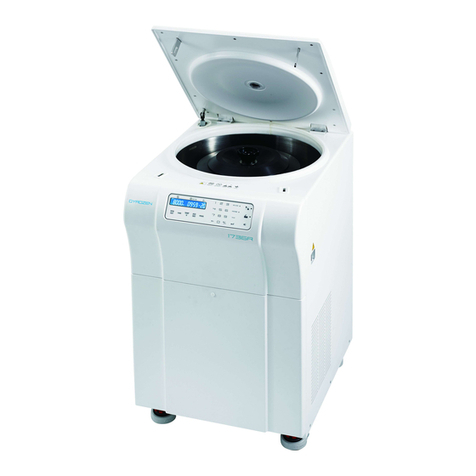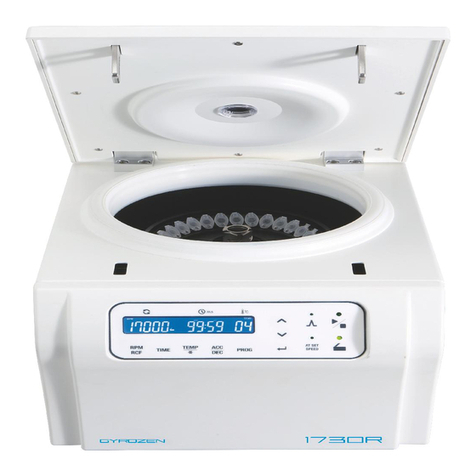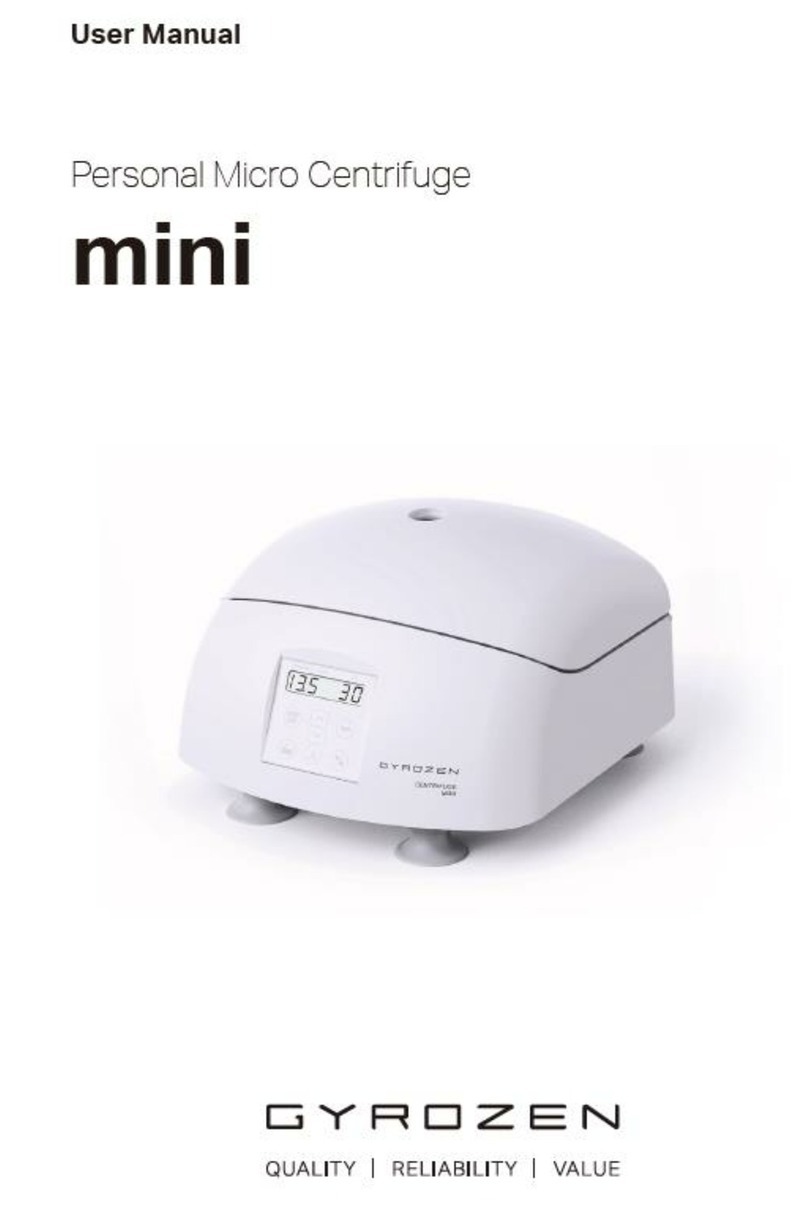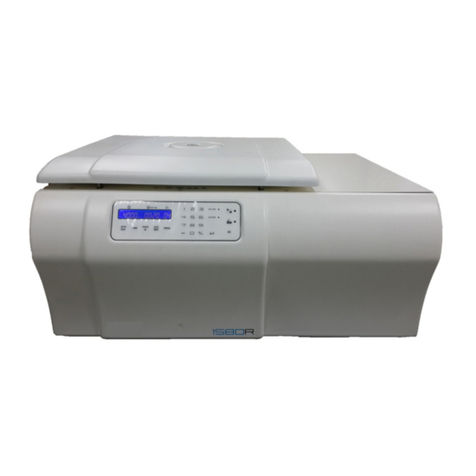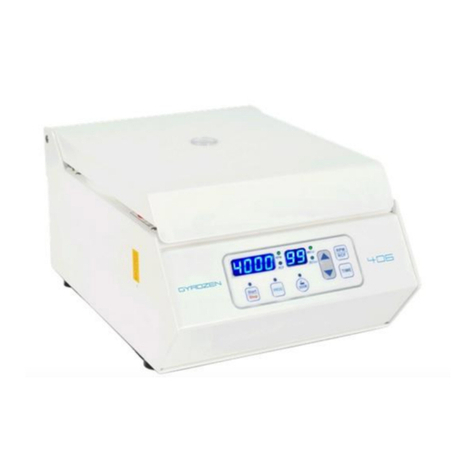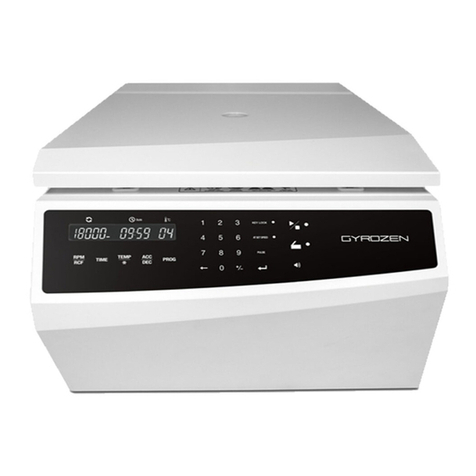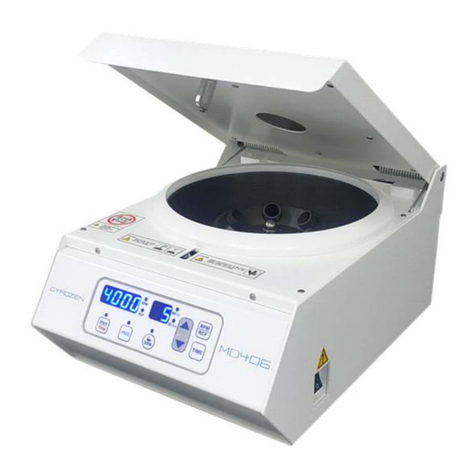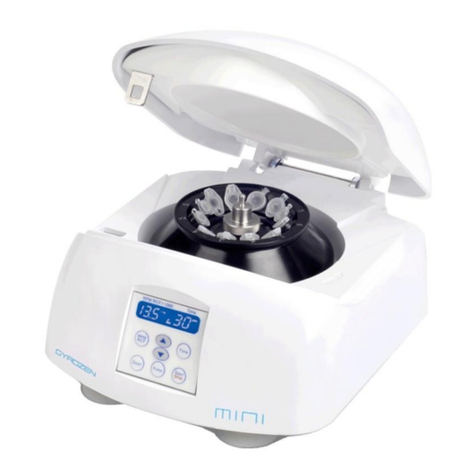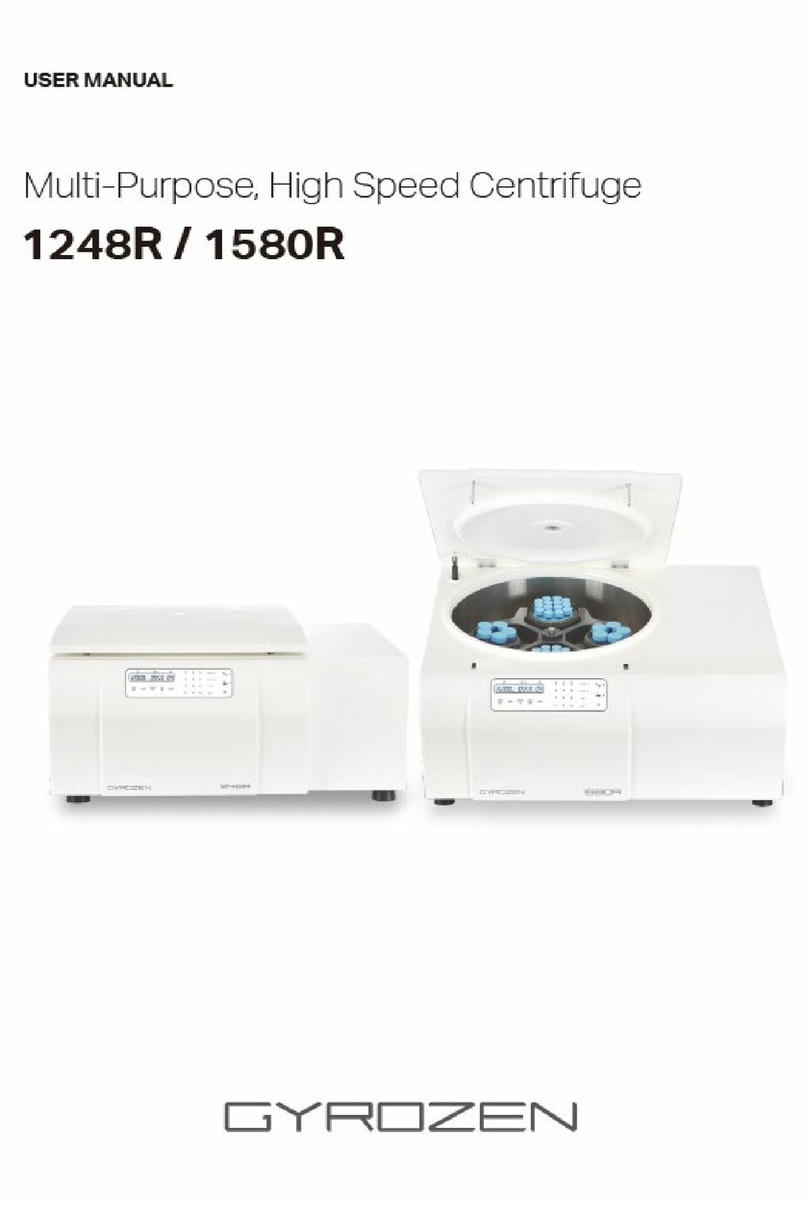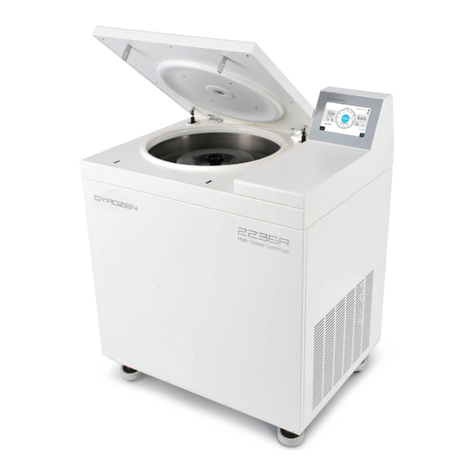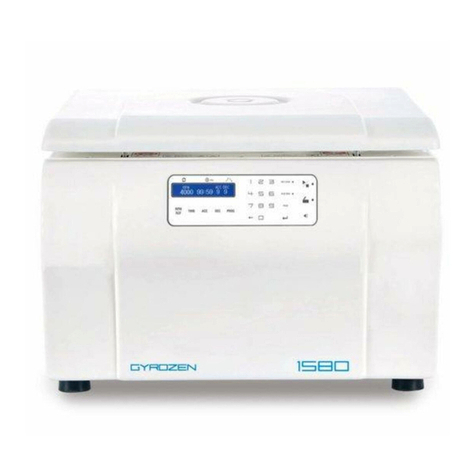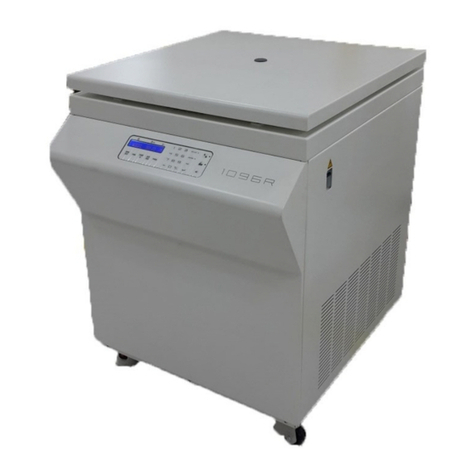
Operating Manual
1.2 Safety Precautions
Be sure to read the operating instructions before using this product.
Prevent possible malfunctions during use.
1. ALWAYS locate the instrument on a flat, rigid and stable table capable of withstanding
the weight of the instrument and its spinning operation.
2. ALWAYS make a safety zone of 30 cm around the centrifuge to indicate that neither
hazardous materials nor persons should be permitted within the area during operation.
- ALWAYS position the instrument with enough space on each side of instrument to
ensure proper air circulation.
3. Always install the instrument in a place where temperature and humidity can be controlled.
- Permissible ambient temperature: +5°C ~ +35 °C, Relative humidity: ≤ 85%)
4. Before connecting the power, check the rated voltage.
5. Should not use unapproved rotors and associated accessories.
6. Before operating the instrument, check if the rotor and the rotor lid are securely fastened.
- Should operate the instrument with a rotor properly installed and secured to the motor shaft
7. Mount the rotor on the motor shaft properly, check it with spinning manually.
8. Do not stop the rotor by touching with hand during the instrument is running.
9. Emergency lid open should be performed only when spinning is completely stopped.
10. Should not exceed the rated speed or specific gravity.
Samples whose density is greater than 1.2g/ml must have reduced
maximum rotational speed to avoid rotor failure.
11. The sample content should not exceed 80% of total capacity of a tube. Otherwise, it
would cause spillage of sample fluid and even the tube breakage.
12. ALWAYS load the tubes symmetrically with evenly weighted samples to avoid
rotor imbalance. If necessary, use the water blank to counterbalance the unpaired sample.
13. The operation speed should not exceed the highest value of the individual guaranteed
g-forces of each centrifuge, rotor, bucket or adaptors and sample container, especially
the guaranteed g-force of sample container should not be neglected.
14. The rotors should be cleaned and kept dry after every use for longer life and safety.
15. ALWAYS disconnect the power supply prior to maintenance care and service to avoid electrical shock.
16. ALWAYS use proven disinfection procedures after centrifuging biohazardous materials.
17. Should not centrifuge flammable, toxic, radioactive, explosive, or corrosive materials.
18. When it is necessary to use toxic or radioactive materials or pathogenic
micro-organisms which belong to the Risk Group II
of WHO: “Laboratory Bio- safety Manual,” should follow national regulations.
6 www.gyrozen.com

